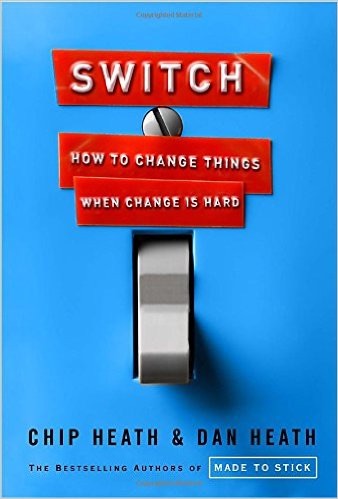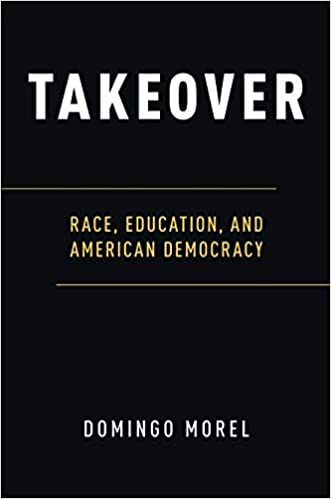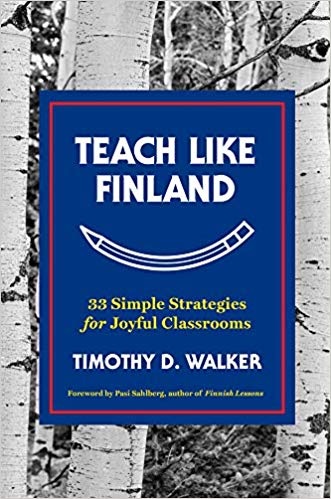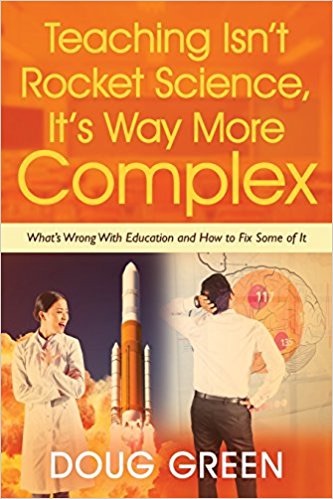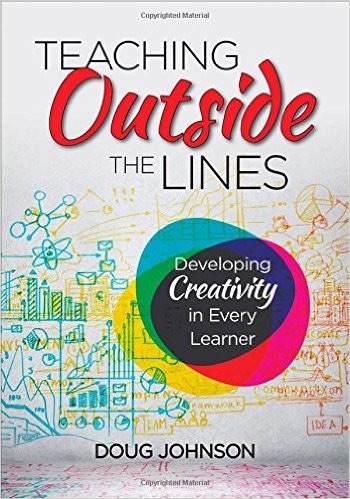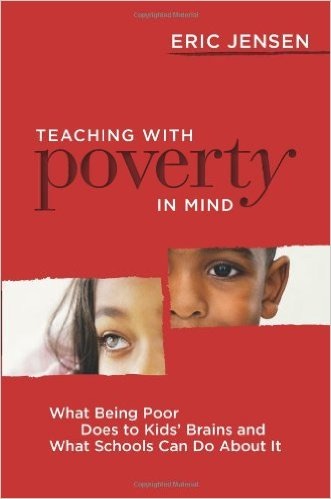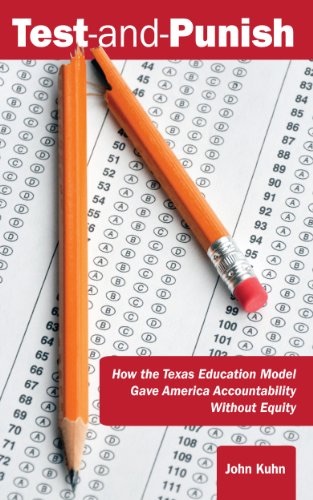Archive for the ‘Book Summaries’ Category
Friday, January 25th, 2013
Switch: How to Change Things When Change is Hard by Chip and Dan Heath deals this one of the most important topics faced by any leader and everyone else. They believe that the primary obstacle comes from conflict built into our brains. They explore this conflict between our rational brain and our emotional brain that compete for control. This book will help your two minds work together. It draws on decades of research from multiple fields to shed new light on how you can effect transformative change. Discover the pattern they have found and use it to your advantage. Click below to purchase this important book.
The Heath Brothers
- Chip Heath is a professor at the Graduate School of Business at Stanford University. Dan Heath is a senior fellow at Duke University’s Center for the Advancement of Social Entrepreneurship (CASE). They are the authors of the bestseller Made to Stick and a new book Decisive: How to Make Better Choices in Life and Work also summarized here.
I just added a summery of thier 2018 book The Power of Moments.
Introduction
- All change efforts have something in common: For anything to change, someone has to start acting differently. All change effort boils down to the same mission: Can you get people to start behaving a new way? First surprise: What looks like a people problem is often a situation problem. To change someone’s behavior, you’ve got to change that person’s situation.
One Brain – Two Minds
- Human brains have their emotional side and their rational side. You can think of the two sides as the planner (rational) and the doer (emotional). In this book, the Heaths use an analogy they borrowed from Jonathan Haidt in his book The Happiness Hypothesis. Here, the emotional side is the Elephant and the rational side is the Rider. When the two sides disagree, the six-ton Elephant is going to win. If you want to change things you need to appeal to both the Rider and the Elephant. The Rider does the planning and the Elephant provides the energy. The Rider provides the direction, the Elephant provides the passion.
Posted in Book Summaries, Business Books, Education Books, Leadership Books | Comments Off on Switch: How to Change Things When Change is Hard by Chip and Dan Heath
Friday, March 4th, 2016
1. Classroom Management Essentials
- Your attitude underpins everything you do. It determines the way you speak to students, the type of activities and tasks you offer them, the amount of time you allocate to building relationships with them, and everything else. Student behavior is more often a cry for help than a personal attack. I you can feel empathy, you will see a total change in the way you view young people and a total change in your attitude towards them. When teaching, be constantly on the move, teach from each corner of the room, and use a calm, matter-of-fact approach, which is far more effective than shrieking
- The law of least intervention states that we should always use the least intrusive or least disruptive method of dealing with a student so that we don’t disturb and/ or attract the attention of other students in the room. You have to be consistent in every aspect. You can’t use your system one day and not the next. You can’t apply them to one student and not his friend. Rather than talk to a student so others can hear, ask certain students to join you outside the room for a corridor meeting where you can address their concerns. Make regular positive contacts with parents to get them on your side.
2. Establishing routines
- Rob believes that routines are important for an orderly class. One way you can maximize participation in your routines is to involve the students in the creation of them. Spend a few minutes on a one-to-one basis with some of the ringleaders in the group and explain how important it is to you, and the rest of the group, to have their cooperation. This chapter also provides a list of things a teacher needs to do to avoid avoidable disruptions during class.
Posted in Book Summaries, Education Books, Leadership Books | Comments Off on Take Control of the Noisy Class: From Chaos to Calm in 15 Seconds by Rob Pelvin
Wednesday, May 20th, 2020
Takeover: Race, Education, and American Democracy by Domingo Morel tells the story of how state takeovers of urban school districts have tended to coincide with blacks gaining majorities on urban school boards. While the takeovers are based on poor academic performance and corruption, they don’t seem to improve academic results but they do take political power away from the local community. They also tend to result in a lack of collaboration, which is an essential contributor to school success in general. Although this book takes a political side in this argument, it does make a compelling case.
1. Schools, State, and Political Power
- From the first takeover in 1989 (Jersey City, NJ) to 2017 there have more than 100 takeovers. This book examines takeover politics, their impact on communities, and what they teach us about democracy in America. In addition to at least 33 states and the district of Columbia, the 2001 No Child Left Behind (NCLB) legislation authorized state takeovers. What seems puzzling is that studies on the effects of takeovers do not show markedly improved outcomes in test scores, attendance, and graduation rates. They are seen by many as an assault on local autonomy. Since they usually abolish elected school boards, they appear to violate the 1965 Voting Rights Act. Takeovers, therefore, are about political power and they are often about race as racialized communities have historically relied on education policies as a way to enter the political sphere. The road to the mayor’s office and the city council has often gone by way of the school board.
- There has been tension between states and cities ever since cities emerged. Beginning in the 1960s, federal grants to states were used to address issues of education and other issues. Although state funding was a small part of the budget at first, it gave states great leverage when it came to controlling the schools. States have also been slower than the federal government when it comes to advancing civil rights. Most takeover laws were passed in Republican-controlled states. This seems odd as the concept of local control has been central for Republicans and conservatives. Domingo sees takeovers as a systematic disempowerment of black communities and as state-sanctioned political inequality.
2. A View from Two Cities
- Here we have case studies of two school districts that were taken over by their respective states. The first is Newark, New Jersey. Prior to the 1970s, Newark was run by whites even though they were a minority. Then the black and Hispanic voters organized and started to win seats on the school board. They also elected the first black mayor. When state funding shifted due to court decisions, the white-controlled state government demanded accountability from urban schools which included district governance and student accountability. With minorities in charge, the number of jobs in the district expanded. This was seen as patronage among other sources of corruption by the state. In 1988 the state passed one of the first Takeover Laws. When state monitoring exposed nearly 100 complaints, the state took control of its largest district in 1995.
- The elected board was replaced by an “advisory board” along with a black superintendent. In 1996 the superintendent fired over 600 employees stating that the district had become a source of jobs rather than an educational institution. Nearly 2000 part-time jobs were also cut. Test scores and graduation rates worsened during the next five years. This was a shock to the community that had fought to gain political empowerment.
- In 1991 the state of Rhode Island took over the Central Falls School District. This district was almost half Hispanic and included many other immigrant groups. They set up an appointed board with no Hispanic representation. In 2006 an enlightened commissioner started appointing Hispanics. In 2012 the election of a Hispanic mayor improved the relationship between the schools and the mayor’s office. In 2015 the district got a Hispanic superintendent. The cooperation and support resulted in better test scores, a higher graduation rate, and a lower dropout rate. In Newark, the takeover was hostile. In Central Falls, the takeover helped create a path for Hispanics to gain political empowerment and forge stronger ties to local and state elected officials. The conclusion: states have the capacity to disrupt or support local schools.
3. State Takeovers and Black and Latino Political Empowerment
- Schollars generally agree that decentralization is the best way to empower minority groups. An astounding 85% of takeovers have happened in districts where blacks and Latinos make up a majority of the student population. When it comes to how political power for different groups is impacted by takeovers, Newark is representative. The state considered taking over the district when whites ran the school board in the 1960s but never did. They took it over, however, in 1995 when blacks controlled the school board. Latinos made out much better as they went from no power on the elected board to proportional power on the appointed board. Blacks and Latinos are well represented on appointed boards as state officials are concerned with being perceived as “colonizers.” When states go as far as abolishing school boards, it happens mostly in black districts.
4. What Take Over? State Centralization and the Conservative Education Logic
- Between 1973 and 2000 there were school funding court cases in 18 states aimed at increasing state funding in poor districts after which the 14 states with the highest black populations passed takeover laws. As a result, black students are much more likely to attend a school supervised by state authorities. The main reason given for takeovers puts improving academic performance first, but takeover districts have not shown any improvement. The second reason is to improve education so as to improve the state’s economy. Another puzzle is that when takeovers are hostile, the collaboration that promotes good schooling is disrupted.
- “White Flight” to the suburbs resulted in a greater degree of segregation in urban areas. The people who left with their money and wanted to keep as much as they could. As we saw in the case of Newark, state takeover resulted in lower spending on the schools. Eighty percent of takeover laws were passed under Republican governors who generally draw a small percentage of black voters. It seems clear that race, economics, and politics are all important factors that contribute to the likelihood of a state takeover, not just educational outcomes and concerns.
5. The Implications of State Takeovers for Urban Politics: Cohesive and Disjointed State-Local Regimes
- The bulk of this chapter details the relationship between the Newark, NJ school district, and the New Jersey Governors from 1990 to the present. In general, the democrat governors were more in favor of increased financial support and decreased oversight. In 2006 Corry Booker, a black man raised in a white suburb became mayor with weak support from the black community. He backed charter schools, vouchers, and merit pay, which the black community resisted. He got along with the Republican governor Chris Christie who was elected in 2009. During Christie’s term, relations between the state and the people in Newark were fraught with disagreements.
6. Takeovers and American Democracy
- The history of urban politics is one of corruption and patronage regardless of the race in power. It wasn’t until blacks gained power in schools and city governments, however, that states began to take over school districts. State officials also believe that they know better what is best for students in the districts they takeover even though it’s unlikely that they really care more. Domingo feels that the federal government can help by first providing increased financing to poor school districts. The feds can also push the states to make sure that local populations have more control over their schools.
Epilogue
- On April 1, 2019, the last state-appointed superintendent departed ending the 22-year state takeover of Newark, NJ’s schools. The book reports the beginning of this process, but it was published (2018) prior to this event. The beginning of this process began in 2015 by the Republican governor Chris Christie just prior to his announcement that he was running for president. It seems clear that this was part of his effort to show how well he could govern a blue state. Two student protests helped bring this effort to pass. It ended a time where locals were blamed for things that they couldn’t control and began a time where they were now responsible for district outcomes. Domingo expects serious scrutiny from the state as a result.
Domingo Morel
- Domingo is an Asst. Prof at the University for Rutgers, Newark. (@Rutgers_Newark) In addition to authoring Takeover: Race, Education, and American Democracy, he is co-editor of Latino Mayors: Political Change in the Postindustrial City. In 2019, he was a Visiting Scholar at the Annenberg Institute for School Reform and an affiliate with the Taubman Center for American Politics and Policy at Brown University. His website is DomingoMorel.Com. His email is domingo.morel@rutgers.edu. You can reach him on Twitter @DomingoMorel.
Posted in Book Summaries, Education Books, Leadership Books | Comments Off on Takeover: Race, Education, and American Democracy by Domingo Morel
Saturday, February 20th, 2010
Geoff Colvin’s book by this title is cited often by writers in the leadership and education business. This book is based on abundant research and explains what deliberate practice is and how anyone can use it to be better even if they don’t become one of the greats. Like other books I summarize, I encourage you to purchase this one for yourself and/or your organization.
Click here to see the summary of this book.
Tags: Geoff Colvin, Talent is Overrated
Posted in Book Summaries, Education Books, Leadership Books | Comments Off on Talent is Overrated – Try hard work – Geoff Colvin
Monday, October 7th, 2024
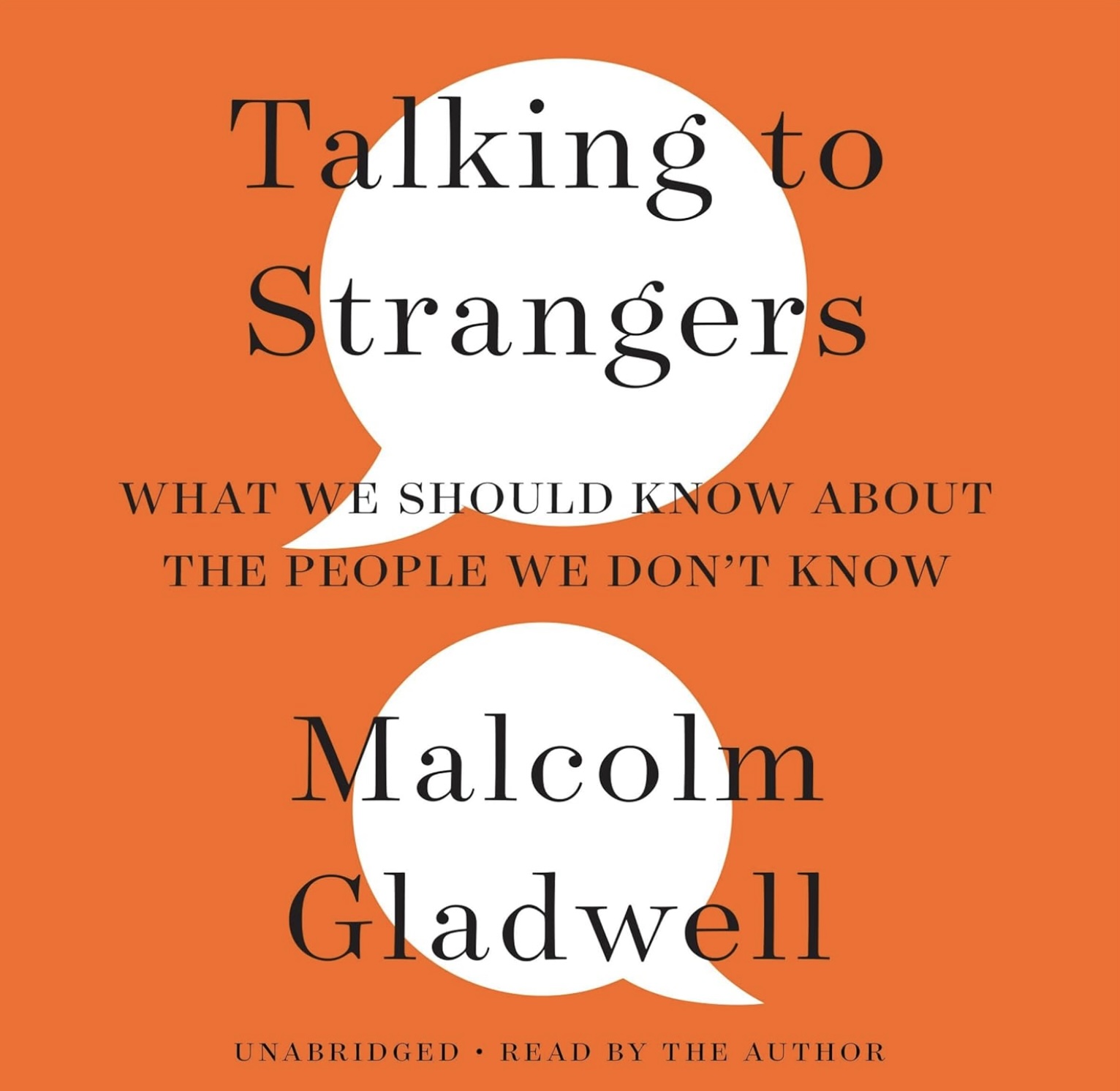
Talking to Strangers: What We Should Know About the People We Don’t Know by Malcolm Gladwell features a number of notable stories where people were unable to correctly determine the intention of strangers. We default to truth when talking to strangers, which makes us prone to misjudgment. The opposite approach of always being skeptical of strangers, however, seems to be less productive.
Part One: Spies and Diplomats: Two Puzzles – 1. Fidel Castro’s Revenge
- Many of the spies the US had in Cuba were double agents. For some reason our people couldn’t tell that they were.
2. Getting to Know Der Führer
- Here is the story of British Prime Minister Neville Chamberlin. Although he had met Hitler, he was duped while those who had not met him like Chamberlin’s predecessor Winston Churchill were not. This puzzling pattern pops up everywhere.
- Judges are more likely to misjudge the people they see than a computer program that only knows their dossier. The main point of this book is that strangers are not easy to judge correctly.
Part Two: Default to Truth – 3. The Queen of Cuba
- Here is another spy who fooled just about everybody. It’s not that the spies are brilliant, it’s something wrong with the people who misjudge them. Evolution should have favored people who can spot a lier, but it hasn’t.
- One theory is the Truth-Default Theory. We operate on the assumption that the people we are dealing with are honest. Our lie detector is set to “off.” It also takes a lot of evidence over time for our suspicions to outweigh our default. A story here about a top Cuban female spy supports this.
4. The Holy Fool
- Bernie Madoff is known as the perpetrator of the largest Ponzi Scheme in history. Malcolm gives the names of a number of people in the securities business who thought that something had to be amiss with Madoff’s business, but they assumed that they were wrong and gave him the benefit of the doubt. The Holy Fool comes from Russian folklore. This is the one person who sees through a scheme and is in a position where he is free to tell everyone what he sees. An example is the boy in Hans Christian Anderson’s The King’s New Clothes. Gladwell tells of one such Holy Fool associated with the Madoff scandal.
Posted in Book Summaries, Business Books, Education Books, Leadership Books | Comments Off on Talking to Strangers: What We Should Know About the People We Don’t Know by Malcolm Gladwell
Monday, January 6th, 2020
Teach Like Finland: 33 Simple Strategies for Joyful Classrooms by Timothy D. Walker tells the story of an American teacher who moved to Finland with his Finnish wife and got a job teaching in a Finnish school. Although he realizes that there are many constraints that prevent American schools from being like Finnish schools, he does think that we can borrow a great deal from the way Finnish teachers operate. All school leaders should get a copy and consider making copies available to their teaching staff.
Forward by Pasi Sahlberg
- You can read my summary of Pasi’s Finnish Lessons here.
- When the first PISA scores were released in 2001, to everyone’s surprise, Finland came in first. There was also less variation between schools and less influence from family backgrounds. Spending was modest. Students start at age seven, schools address all subjects evenly, there are no private schools, students aren’t segregated by their ability, and they believe anyone can learn most of the expected things with sufficient support. Teachers must have a research-based masters and a full-year internship, and about half of all students get some special education support as soon as they need it.
- Principals are certified teachers and do some teaching. After school, there are many associations and clubs that allow almost all students to engage in sports, arts, and/or cultural activities. While it is impossible to transfer education systems from one place to the other, Tim shows how you can use principles found in Finnish schools to improve the quality of education in your school.
Introduction
- As a first-year teacher in Massachusettes, Tim was so burned out that he took a month-long leave in February. After three years of teaching, he moved to Helsinki with his Finnish wife and landed a job teaching in an English speaking fifth grade. In addition to teaching there for two years, he also visited other schools and interviewed many other teachers. He believes that American teachers can and should put Joy first in their classrooms. To organize this book he starts with Raj Raghunathan’s four ingredients of happiness, which are belonging, autonomy, mastery, and mindset. To these, he adds well-being.
1. Well-Being
- Schedule Brain Breaks: When Tim started teaching in Finland he shunned the 15-minute breaks every forty fine minutes employed by other teachers. He soon noticed that his students became zombie-like after a while. When he did start with breaks he noticed that students were much more focused. Refreshing one’s brain leads to greater productivity and creativity. Students should have a choice of what to do during breaks. Look for enjoyment, novelty, and independence. Classrooms also should have “calm spots.”
- Learn On the Move: Until recently, Finland, like the US, got a D for physical activity levels. This prompted the introduction of a program called “Finland on the Move.” They realized that students weren’t getting enough exercise so they added more movement during breaks and during class time. Older students act as exercise facilitators for younger students. Playground gear is checked out to each student. Calisthenics breaks happen during class. Standing desks and exercise balls as seats are being added to classrooms. Students post work in class or hallways and then walk around leaving questions and praise on other students’ work with sticky notes.
- Recharge After School: Finish teachers know the importance of recharging after work. They engage in activities that are not related to their school work. It helps that their teaching load of about 18 hours a week is much less than the 26.8 US schools average. Unlike many US teachers, they don’t equate success with how many hours they work. Rather than encourage teachers to stay late like some US schools, principals will say things like “shouldn’t you be home by now.” This greatly lessens stress and anxiety. Finnish teachers do give homework, but it consists of simple tasks which can be completed over several days without parental help.
- Simplify the Space: Unlike many US classrooms that feature walls cluttered with teacher displays and student work, classrooms in Finland are relatively simple. Studies show that cluttered walls distract student attention and interfere with learning. By putting only a few things on the walls they will get more attention. Posting quality student work is fine, but it need not stay up too long. Not having to constantly decorate also gives teachers more time for other uses.
- Breathe Fresh Air: Classrooms full of students can also have increased levels of carbon dioxide, which can negatively impact learning. For this reason, opening windows from time to time is part of the Finnish philosophy. They also get students outdoors even when it’s raining and at temperatures as low as 5 degrees F (-15 C). Classroom temperatures should be between 68 and 74 F and they should feature as much natural lighting as possible.
- Get Into the Wild: Howard Gardner the creator of multiple intelligence theory has added an eighth intelligence he calls naturalist intelligence. Finnish teachers get their students into nature as much as possible be it on the school grounds or via a field trip. On the school grounds, you can observe and record nature. You can also grow things and add bird feeders. Be sure to bring nature into your classroom where you can also grow plants and some small animals like frogs.
- Keep the Peace: Peaceful classrooms make for better learning. At times the room will be quiet as students work independently. At other times students will collaborate. Sometimes both may be happening with the collaborators off in a corner. Students work to make class rules with a focus on respect and three rules is a good number. Then they make anchor sheets, which show the kind of behaviors that promote the rules. Students take charge of a “noise detector” so they feel responsible for keeping the peace. Meditative-like mindfulness activities help settle students down after periods of physical activity.
Posted in Book Summaries, Education Books, Leadership Books | Comments Off on Teach Like Finland: 33 Simple Strategies for Joyful Classrooms by Timothy D. Walker
Sunday, December 16th, 2018
Just in time for Christmas. Here is an executive summary of my recent book. Based on the feedback I received so far, it would make an excellent present for any educators and parents with kids in school. Also, consider getting a copy for any policymakers you know.I hope you like it.
Click here to buy at Amazon
1. Introduction
- Teaching is tricky business. If it were as easy as rocket science, which we seem to have figured out, all students would be learning as fast as their individual brains would allow. This implies that they would learn at their own individual pace, which would cause the gaps between the faster learners and the slower learners to gradually increase.
- Unfortunately, our current set of reforms driven by the corporate/ political complex gives the same tests to students each year based on their born on date, regardless of their ability. It also expects teachers to close the gaps between slow and fast learners. One way to do this is to slow down the fast learners. In this book, Dr. Green explains why the current reforms and out-dated teaching methods need to go and just where we might head.
2. Teaching Isn’t Rocket Science; It’s Way More Complex
- It’s clear that we understand how rockets work as we have sent them all around the solar system and beyond. The human brain, however, which is the learning playground for students and teachers is much more complex and less understood. Promising ideas in education spread slowly, if at all, because of a resistance to change and federally imposed standardized testing. Thanks to the media, however, the public doesn’t realize this and they think that teachers are generally doing a bad job. They also think that all students should be able to achieve at high levels, which is nonsense. We all know that some students are more capable at cognitive tasks than others.
3. The Pressure On Teachers To Get Good Test Scores Makes It Inevitable They Will Cheat
- When the government encouraged by business leaders imposes high-states tests on schools, three things can happen. First, some will cheat and many have. Second, most will try to game the system with endless test prep that brings with it a lot of bad teaching practice. Finally, some will just fail. Schools will be closed and careers will be negatively impacted or ended altogether. This chapter documents some of the cheating and explains the different ways that teachers can cheat. It also suggests that teachers work to create engaging lessons and let the tests take care of themselves. If they do, test scores are unlikely to go down and just might go up.
4. Are You Smarter Than Bill Gates?
- Bill isn’t the only member of the corporate class pushing for test-based accountability, he is just the most famous and has the most wealth to push his ideas. Dr. Green suspects that when Bill wants to cure some disease, he reaches out to experts in the field. When it comes to education, it seems that he thinks he already knows the answers. Meanwhile, it’s hard to find any real expert in the field who thinks the current reforms are a good idea.
5. Failing at the Business of Schools
- Unlike businesses, schools cannot control their raw materials. They just take the students that their parents drop off. Most are also run from the top by a school board composed of elected volunteers who for the most part lack any serious educational expertise. For these reasons, trying to hold schools to business standards makes no sense. It also makes no sense to hold all schools to the same standard as their raw materials vary.
6. Achievement Gaps and Ethnic Groups
- When advocates for blacks, Hispanics, and poor kids see that that whites and Asians perform better on standardized tests, they expect schools to work on closing the gaps. Ironically, if schools did a perfect job of letting every student learn as fast as possible, the gaps would increase. Doug maintains that the best way to close the gaps is to slow down the fast learners, which some schools do well. He also points out that the subgroups themselves are arbitrary and don’t make much sense. For example, why are Spanish speakers the only group based on the language they speak when more people speak English and Chinese? People from China and India are very different in appearance and culture, yet they are in the same group.
Posted in Book Summaries, Education Books, Leadership Books | Comments Off on Teaching Isn’t Rocket Science, It’s Way More Complex: What’s Wrong With Education and How to Fix Some of It by Doug Green
Tuesday, July 4th, 2017
Teaching Outside the Lines: Developing Creativity in Every Learner by Doug Johnson encourages teachers to believe that all students can be creative and gives specific advice for how to allow for it in schools. Be sure to get one for every teacher you know.
Introduction: How Did Vasco da Gama Spark My Interest in Creativity?
- Why do educators not only fail to encourage creativity, but also seemingly discourage it? If you agree with Doug you see creativity as important in education as literacy. While we accept creativity in art class and on the athletic field, we discourage it with stay-within-the-lines rules, one-right-answer tests, praise for conformity, and using tests to judge school and teacher effectiveness. Teachers often see that creativity has no roll in core subjects. It’s also important to realize the creativity without skills, knowledge, discipline, hard work, and practice isn’t worth much. Doug also sees that just like there are multiple types of intelligence, there are also multiple types of creativity. And don’t think that just using technology allows for creativity. Creative people can make others nervous or upset, which explains why it is often discouraged in schools. If problem solving is important, we need to realize that higher levels of problem solving give creativity full reign.
1. The Rise of the Creative Classroom: Why is Creativity No Longer a Nice Extra in Education?
- Creativity may be the only way people can stay employed in good jobs in a postindustrial, automated, global economy. Jobs that require complex communication and expert thinking have increased since 1969. Since then jobs featuring routine cognitive or manual work have been decreasing. If machines or people in developing nations can do a job, they soon will. A poll of 1,500 CEOs identified creativity as the number one leadership competency for the future. It’s not hard to find creativity in the standards promoted by many organizations, but studies show that schools in the US have not succeeded in fostering creativity. In fact, they are doing just the opposite. The obvious culprit, of course, is our obsession with testing.
2. I Can’t Define It, But I Know It When I See It: What is Creativity Anyway?
- After looking at many definitions, Doug sees that creativity has an element of the new, the innovative, the original, and something not yet done or done in a new way. Definitions also include the notion that creativity adds value to the task or objective to which it’s applied. Craftsmanship is also essential. That is why it is important for schools to also work on skills and knowledge acquisition. Craftsmanships is what separates scribbles from art and cacophony from music. As craftsmanship gets stronger, the creative process is enhanced.
- It is important that teachers and parents believe that all students have the capacity for innovation. There are also several other characteristics that promote creativity. Girt, which is more highly correlated with success than IQ, is necessary. Empathy also helps as does the courage to take risks. You certainly need a growth mindset so you believe that your metal and physical capacities are not fixed. (See my summary of Carol Dweck’s Mindset to review this concept. One needs self-esteem and confidence along with lots of curiosity. Finally, you need to realize the you might be fighting people and establishments that want to keep things just the way they are. A creative idea can undermine the status quo.>/li>
Posted in Book Summaries, Education Books, Leadership Books | Comments Off on Teaching Outside the Lines: Developing Creativity in Every Learner by Doug Johnson
Sunday, November 13th, 2016
Teaching with Poverty in Mind: What Being Poor Does to Kids’ Brains and What Schools Can Do About It by Eric Jensen explains how the stresses encountered by poor students can impact their achievement in school and what schools can do about it. All schools should get some copies into their teachers’ hands.
Introduction
- Eric’s Three Claims.
-
1. Chronic exposure to poverty causes the brain to physically change in a detrimental manner.
-
2. Because the brain is designed to adapt from experience, it can also change for the better. In other words, poor children can experience emotional, social, and academic success.
-
3. Although many factors affect academic success, certain key ones are especially effective in turning around students raised in poverty.
- Eric points out that many poor students have not succeeded, and he claims that its due less to parents than to certain school-site variables that he thinks may surprise you. A goal of this book is to provide a better understanding of what poverty is and how it affects students. He goes on to explain what drives change within schools and inside a student’s brain. To help you make changes in your school and classroom, Eric draws on successful schools that serve poor children.
Posted in Book Summaries, Education Books, Leadership Books | Comments Off on Teaching with Poverty in Mind: What Being Poor Does to Kids’ Brains and What Schools Can Do About It by Eric Jensen
Thursday, January 8th, 2015
Test-and-Punish: How the Texas Education Model Gave America Accountability Without Equity by John Kuhn follows the history of the modern education reform movement from its roots in Texas. While the tone is strongly one-sided, John makes a compelling case for reforms that diagnose-and-support and finds a way to finance schools in a more equitable manner. If you haven’t joined his battle, it may be time. Click at the bottom of any page to purchase this powerful argument.
John Kuhn
- John Kuhn is a public school administrator in Texas and a vocal advocate for public education. His Alamo Letter and YouTube videos of his 2011 speech at a Save Texas Schools rally went viral, as did his 2012 essay The Exhaustion of the American Teacher. He has written two education-related books, 2013’s Test-and-Punish (Park Place Publications) and 2014’s Fear and Learning in America (Teachers College Press).
Prologue
- Although this book talks a lot about Texas, it is actually a book about national education policy. It’s focus is the test-and-punish craze that has dominated education policy-making in the United States since former Texas governor George W. Bush worked to introduce No Child Left Behind legislation. John sees this law and subsequent iterations as a series of big mistakes. This would include the use of data to punish schools, teachers, and students; the reduction of school quality to a simple menu of labels; vacating the concept of supports in favor of consequences; the misuse of test scores to force privatization; the implementation of accountability algorithms to attain political goals; the increasing investment of limited funding and time for the sake of standardized tests; and the sidelining of teachers in favor of lobbyists and politicians in designing accountability legislation. He takes heart in the fact that a band of passionate parents and feed-up teachers, board members, and administrators are fighting back, and he sees this push back to the reform movement spreading to other states.
Posted in Book Summaries, Education Books, Leadership Books | Comments Off on Test-and-Punish: How the Texas Education Model Gave America Accountability Without Equity by John Kuhn
